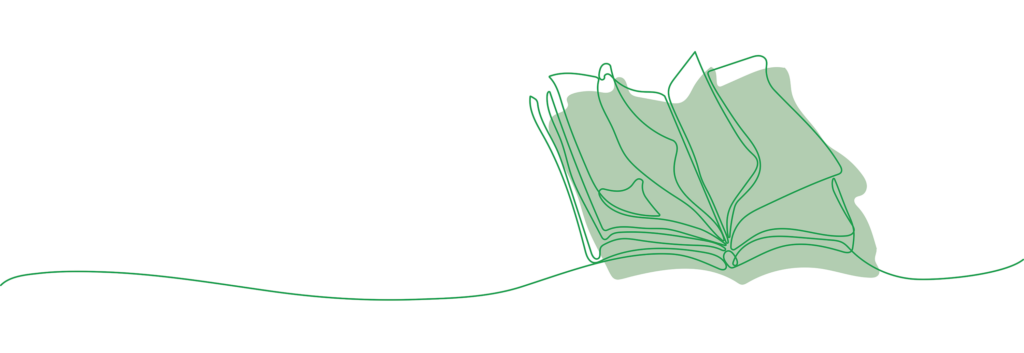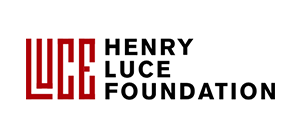The American Economic Association’s Committee on the Status of Women in the Economic Profession (CSWEP) and the Social Science Research Council (SSRC) support the evaluation of cost-effective and scalable interventions designed to increase the presence and success of women throughout the economics and mathematics disciplines. The CSWEP-SSRC Women in Economics and Mathematics Research Consortium focuses on research that tests, replicates, and scales interventions designed to increase women’s representation in economics and mathematics, and will work with university, disciplinary, and departmental leaders to secure the implementation of effective interventions.
Background
Women receive approximately 55% of all undergraduate degrees in the United States, but are substantially underrepresented in the disciplines of economics and mathematics. In 2020, women at doctoral institutions received only 34% of undergraduate and only 35% of doctoral degrees in economics. Perhaps surprisingly, the underrepresentation of women in economics has improved little over the past twenty years. In 2001, these shares were 33% and 31%, respectively. In fact, in top ten economics departments, the share of women receiving economics PhDs has actually declined, from 27% in 2001 to only 24% in 2020. Women are more underrepresented in economics than in STEM fields on average. The only fields with a greater underrepresentation of women than economics are engineering and computer science (Levenstein 2020).
Similarly, in 2021 women received only 28% of doctoral degrees awarded in mathematics and statistics. Women received 29% of doctoral degrees awarded in mathematics and statistics in 2011, indicating no increase between 2011 and 2021 in the share of women receiving doctoral degrees in these fields. In 2018 women received 42% of undergraduate degrees in mathematics and statistics, a slight decrease from the 44% of women who received undergraduate degrees in mathematics and statistics in 2008 (National Center for Science and Engineering Statistics).
We have relatively little understanding of the nature of the interventions that may increase the numbers and success of women as undergraduate and graduate economics and mathematics students, and as economics and mathematics faculty. A recent climate survey by the American Economic Association found that only 20% of women responded affirmatively to the statement, “I am satisfied with the overall climate in the field of economics,” as compared to 40% of men. 48% of women reported being discriminated against or treated unfairly on the basis of sex, as opposed to 4% of men (AEA Professional Climate Survey: Final Report, September 15, 2019). Yet common interventions designed to reduce discriminatory actions, such as implicit bias and sexual harassment training, have had little success in changing behavior and, in some cases, may lead to backlash (Dover et al 2016, Forscher et al 2019).
The underrepresentation of women as economics and mathematics faculty, graduate students, and undergraduate students may have multiple contributing factors. The relative absence of women as role models, mentors, and peers may contribute to a perception that economics and mathematics have little content of interest or relevance to women (Bayer et al 2019, Porter and Serra 2020, Shan 2022). The relative absence of women in these disciplines may also contribute to an environment in which sexual harassment is more common while reporting of harassment is less common, and from which women who experience harassment are more likely to exit (Dahl and Knepper 2021, Adams-Prassl et al 2022, Batut et al 2022, Boudreau et al 2022, Folke and Rickne 2022). If information sharing occurs in part through same-gender networks, women in economics and mathematics may have fewer opportunities to learn the “hidden curriculum” of success in the discipline (Ginther et al 2020, Ginther and Na 2021). Interventions that increase the frequency, duration, and quality of interactions between women in economics and mathematics and women as peers, role models, advisors, and mentors may increase the numbers, persistence, and success of women in these disciplines. Other interventions, including those that reduce the incidence of sexual harassment in these disciplines, may also be effective at increasing the representation of women in economics and mathematics.
Researchers have recently begun to evaluate the effects of interventions designed to increase the numbers and success of women in STEM disciplines. For example, Bayer et al (2019) conducted a randomized controlled trial involving 2,710 undergraduate students across nine U.S. liberal arts colleges in the summer of 2016. The research team randomly assigned all incoming female and Hispanic, Black, Native American, and multiracial (collectively URM) students entering their first year of college at one of the nine liberal arts colleges to one of three experimental conditions: 1) a control condition with no email messaging; 2) a “Welcome” treatment that consisted of two emails encouraging students to consider enrolling in economics courses; and 3) a “Welcome + Info” treatment of two emails that encouraged students to consider enrolling in economics courses, but that also included information showcasing the diversity of research and researchers within economics, with links to educational materials on the website of the American Economic Association website featuring Black and women economics faculty, and research on racial and gender discrimination in a variety of contexts. The research team found that, while both treatments were effective in increasing enrollment in economics courses, the “Welcome + Info” condition emphasizing the diversity of economics was particularly impactful, raising economics course completion in the first semester by 3 percentage points or nearly 20 percent of the baseline rate, with positive effects across sub-groups.
Porter and Serra (2020) randomly exposed 688 undergraduate students in introductory economics classes at Southern Methodist University in the Spring 2016 semester to classroom visits by successful women economics alumni, who gave 15-minute talks about the impact of studying economics on their career trajectories. Exposure increased the likelihood that a woman would major in economics by 8 percentage points over a baseline of 9%, nearly a 100% increase in the share of women economics majors. The likelihood that a woman would take an intermediate economics class the year following the introductory class also doubled, increasing by 11 percentage points over a baseline of 11%; likewise, the likelihood of taking another economics class at any time after the introductory class increased by 14 percentage points over a baseline of 18%. Male students’ choices were unaffected by the treatment.
Canaan and Mouganie (2021) examined outcomes for undergraduate women economics majors randomly assigned to women faculty advisors instead of male faculty advisors at the American University of Beirut between 2002 – 2015. Advisors at AUB are also faculty members in the economics department, whose job is to help students select courses, resolve academic problems, and monitor their academic progress. Students are required to meet one on one with their advisors once at the beginning of each semester and can attend their advisors’ weekly office hours. The researchers found that having a woman rather than male advisor (i) decreased women students’ first-year major dropout rate by approximately 4 percentage points (33%) and (ii) increased the share of women graduating with a degree in economics by 7 percentage points (9%).
Shan (2022) analyzed a trial that randomly assigned 620 undergraduate students at a Swiss university enrolled in introductory economics classes to four-person study groups. Women students randomly assigned to male-majority study groups were 10 percentage points more likely to drop the course, a large effect relative to the class average 11% dropout rate. Women students randomly assigned to male-majority study groups also reported lower post-treatment estimates of the proportion of women who study economics, had lower expectations about their future achievements in economics, and interacted less with their study group members.
Similar interventions may increase the numbers and success of women in economics and mathematics graduate programs. For example, Bostwick and Weinberg (2022) found in a quasi-experimental analysis that a 1 standard deviation increase in the share of female students in an entering STEM doctoral program cohort differentially increased the probability of on-time graduation for women by 4.6 percentage points. These effects functioned largely through changes in the probability of dropping out in the first year of a Ph.D. program, and tended to be largest in programs that are typically male-dominated.
Women doctoral students and junior faculty in economics and mathematics may also benefit from mentoring by more senior women who provide valuable information about how to achieve success. Ginther et al (2020) studied a trial randomly assigning 365 junior (pre-tenure) women economics faculty to a control group or to a mentoring treatment between 2004 and 2014. The mentoring treatment consisted of a 2-day mentoring workshop organized by AEA’s CSWEP held in conjunction with the AEA annual meetings. Participants were arranged into small groups (4–5 participants and 1–2 mentors) based on research interests. Each participant circulated a research paper or other related work before the workshop. During the workshop, the small groups met to discuss and provide feedback on each participant’s work (approximately one hour for each participant). In addition, plenary sessions were held consisting of panels of the senior mentors. Topics included research and publishing, grants, professional exposure, teaching, the tenure process, and work-life balance. Assignment to treatment increased the probability of having a tenure track job by 11 percentage points, or 15% relative to the mean, and increased the probability of having a tenure track job in a top 100 institution by 16 percentage points or 56%. The treatment significantly increased the probability of a tenured job in an institution ranked in the top 30 by 7 percentage points (79%), and the probability of tenure in a top 50 ranked institution by 9 percentage points (74%). At the same time, participants had a 12 percentage point or 65% lower probability of having a tenured position at an unranked institution. The treatment also significantly lowered the probability of holding a nonacademic job by 10 percentage points (41%).
Similarly, Ginther and Na (2021) found that mentoring of junior women economics faculty by senior women in the discipline increased publication and tenure rates. Based on their randomized evaluation of the annual mentoring workshop organized by AEA’s CSWEP, the authors found that women who participated in the workshop had 3 more coauthors (51% above the control group), 1.6 more publications (26% above), and 43 more citations (45% above). These findings suggest that providing women graduate students and junior faculty in economics and mathematics with mentoring from senior women faculty may be able to increase their success on the academic career path, perhaps by providing valuable information about the “hidden curriculum” of academic success.
Because the incidence of sexual harassment appears to be higher while reporting rates are lower in male-dominated workplaces, increases in the numbers of women in economics and mathematics may increase reporting and reduce the incidence of sexual harassment in these disciplines (Dahl and Knepper 2021, Folke and Rickne 2022). Increases in the numbers of women in senior positions in economics and mathematics may increase the likelihood of discipline for perpetrators of sexual harassment, further reducing the incidence of harassment in the discipline (Adams-Prassl et al 2022). Because victims of sexual harassment are more likely to exit workplaces, reductions in sexual harassment in economics and mathematics may in turn support further increases in the numbers of women in the discipline (Adams-Prassl et al 2022, Batut et al 2022, Folke and Rickne 2022). Interventions that directly reduce sexual harassment in economics and mathematics, for example by shielding reporters of misconduct from retaliation, may also increase the representation of women in the discipline (Boudreau et al 2022).



